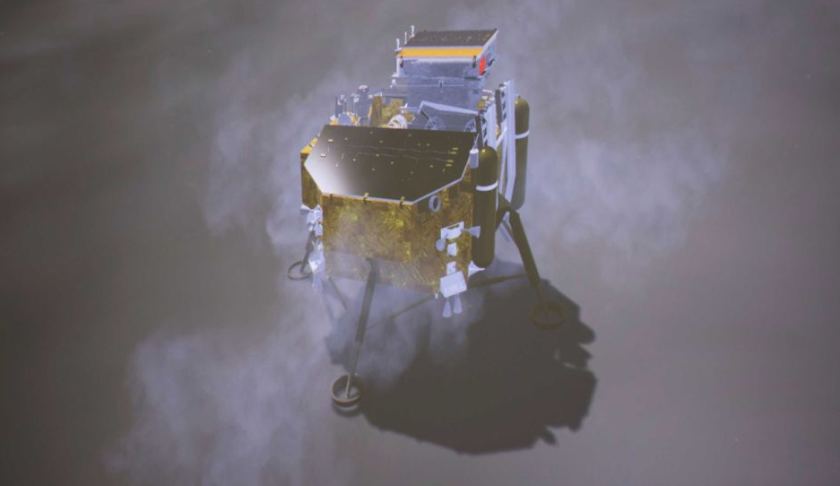The 'soft landing' on the moon's far side by the Chinese probe is a first and will see the probe conduct a series of biological experiments, low-frequency radio astronomy observations and geological surveys to understand the composition and geology of the moon.
The Chinese Chang'e-4 lander/rover combination included a container supporting six live species from Earth as part of the attempts to establish an experimental biosphere, including:
- Cotton;
- Rapeseed;
- Potato;
- Fruit fly;
- Yeast; and
- Arabidopsis (a species of flowering plant).
If successful, the experiment would establish a self-sustaining biosphere using the insects and plants to establish a basic ecosystem. This would be first time a biosphere has been successfully formed on the planetoid.
Additionally, the lander includes a range of other equipment and sensors for conducting a suite of experiments and surveys, including:
- A panoramic camera;
- A ground penetrating radar to survey beneath the lunar surface;
- An imaging spectrometer to identify mineral concentrations; and
- An experiment to examine the interaction of the solar wind and the lunar surface.
Further to these capabilities, Chang'e-4 will also conduct a German-built radiation experiment called the Lunar Lander Neutron and Dosimetry (LND) experiment to develop an understanding about the radiation levels on the surface of the moon ahead of sustained human settlement.
Chang'e-4 is part of a larger program of lunar exploration conducted by CNAS as China turns its attention towards space exploration and research. In 2017, the rising superpower announced plans to send astronauts to the moon, the first time since 1970s, and is expected to begin building its own space station for launch by 2022.
The South Pole-Aitken basin is an impact crater on the far side of the moon, roughly 2,500 kilometres in diameter and 13 kilometres deep, it is one of the largest impact craters in the solar system and is the largest, oldest and deepest such basin recognised on the moon.
NASA administrator Jim Bridenstine congratulated the Chinese accomplishment via Twitter, saying, "Congratulations to China's Chang'e 4 team for what appears to be a successful landing on the far side of the moon. This is a first for humanity and an impressive accomplishment!"
Previous moon missions conducted by both the US and Soviet Union all landed on the Earth-facing side.

